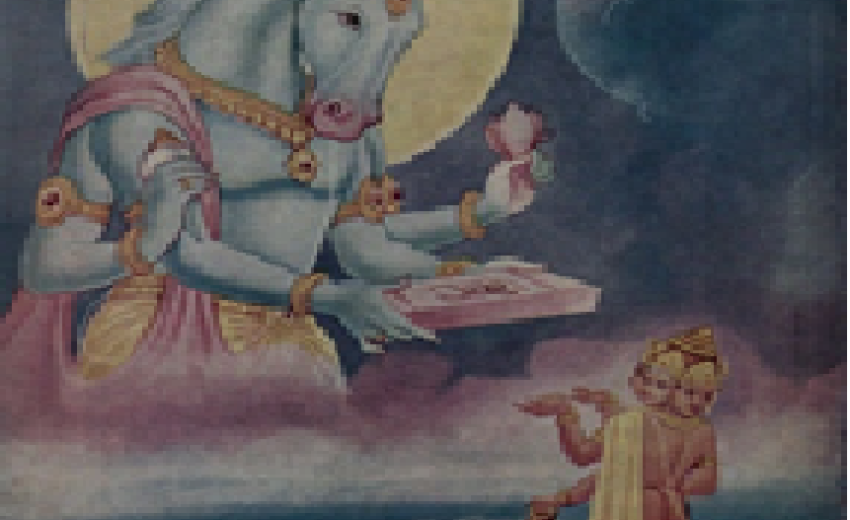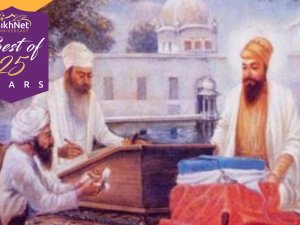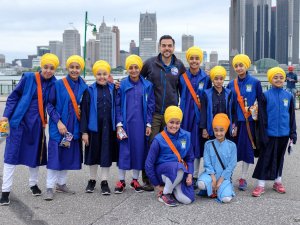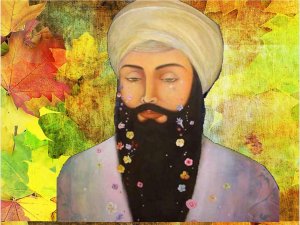Introduction to the short stories
The short stories are a collection of stories taken from the Aadh Guru Granth Bhagat Mala, which have been translated into simple English. The purpose of translating these stories is to provide understanding and the significance of these stories when reciting Gurbaani.
The Sikh Gurus and other Bhagats within Sri Guru Granth Sahib Ji have made references to the various saints and disciples who existed at the time of the Hindu deities. By no means are these stories a form of praise or worship of the Hindu deities, but they are used as a reference to purely develop the meaning of Gurbaani.
The stories taken from Hindu mythology provide examples from the lives of the disciples and saints as parallels to understand the power and greatness of the One Lord, the righteous practise of faith and Dharma and how one is emancipated from sin and misfortune through meditating upon the Primal Lord.
~ Harjinder Singh Khalsa
Madhusudan in Gurbani
ਮਧੁਸੂਦਨ ਹਰਿ ਮਾਧੋ ਪ੍ਰਾਨਾ ॥
madhhusoodhan har maadhho praanaa ||
The Lord, the Slayer of demons, is my breath of life.
ਮੇਰੈ ਮਨਿ ਤਨਿ ਅੰਮ੍ਰਿਤ ਮੀਠ ਲਗਾਨਾ ॥
maerai man than a(n)mrith meet(h) lagaanaa ||
His Ambrosial Amrit is so sweet to my mind and body.
(Guru Ram Das Ji; GGSJ: 698)
Madhusudan is one of the many names assigned to God and is also the name given to one of Vishnu's avtars, who slayed the demons Madhu and Kaitabha.
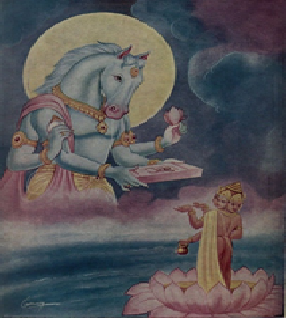 It is believed that both Madhu and Kaitabha were formed from Vishnu's earwax. As a result of their intense meditation, both brothers were granted a boon from Brahma that they would not be killed by any human being. They became fierce, powerful beings and roamed the realms exercising their power. They brought great misery to the deities.
It is believed that both Madhu and Kaitabha were formed from Vishnu's earwax. As a result of their intense meditation, both brothers were granted a boon from Brahma that they would not be killed by any human being. They became fierce, powerful beings and roamed the realms exercising their power. They brought great misery to the deities.
Madhu and Kaitabha entered Brahmlok, where Brahma resided, and stole the Vedas from Brahma. They deposited the Vedas deep into the ocean. Mortified by the actions of Madhu and Kaitabha, Brahma prayed to Vishnu and asked for his help to kill the demons. Vishnu saw the calamity that was caused within the realms and agreed to put an end to this.
Vishnu took the form of Hayagriva; a horse headed deity and beheaded both demons with his Sudarshana Chakara (serrated discus). Vishnu restored the Vedas and returned them to Brahma. The deities praised Hayagriva and renamed him Madhusudan, the slayer of demons.
The name Madhusudan has been referenced five times within Sri Guru Granth Sahib Ji but to the Almighty Lord, Vaheguru and not the deity Vishnu. The True Slayer of demons is Vaheguru Himself.
ਅਚੁਤ ਪਾਰਬ੍ਰਹਮ ਪਰਮੇਸੁਰ ਅੰਤਰਜਾਮੀ ॥
achuth paarabreham paramaesur a(n)tharajaamee ||
The Supreme Lord God is imperishable, the Transcendent Lord, the Inner-knower, the Searcher of hearts.
ਮਧੁਸੂਦਨ ਦਾਮੋਦਰ ਸੁਆਮੀ ॥
madhhusoodhan dhaamodhar suaamee ||
He is the Slayer of demons, our Supreme Lord and Master.
(Guru Arjan Dev Ji; GGSJ: 1082)
Other references to Madhusudan within Guru Granth Sahib Ji:
Guru Ram Das Ji - Ang 94, 980
Guru Nanak Dev Ji - Ang 359
-------------------------------------------------------------------------------
Related Articles:
Part II: Bhagat Angra ji and Bhagat Bidar
Part III: Sri Dhru Bhagat & Sri Prahladh Bhagat ji
Part V: The Story of Bhagat Sudama
Part VI: The story of Gotam Muni & Ahalia
Part VII: The Story of Raja Janak
Part VIII: The Story of Raja Bali
Part IX: The Story of Ajraja-Akrur
Part X:The Story of Bhisham Pitaama
Part XI: The Story of Chandar Hans
Part XII: The stories of Durbaasha Rishi and Gajinder (the Elephant)
Part XIII:The Stories of Kubija Maalan and Oudhar
Part XIV:The Story of Sarvan Bhagat
Part XV: The Story of Rishi Balmeek
Part XVI: The Stories of Sankaadik and Rukmaangudh
Part XVII: The Story of Sukdev Muni
Part XVIII: Madhusudan Demon Destroyer
Part XXI: Sulhi & Sulbi Khan's Evil Conspiracy
Part XXII: The Story Raja Hari Chand

